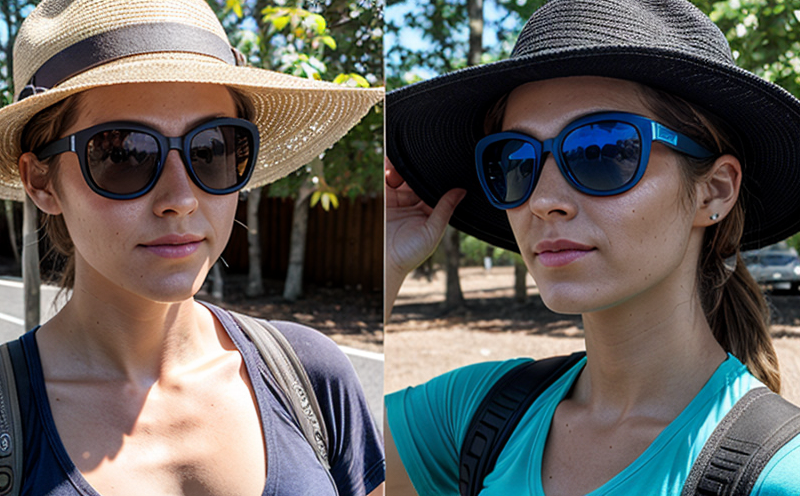NF EN 13758-1 Classification of UV protective clothing
The CEN standard NF EN 13758-1 sets out the requirements and test methods to classify textile products, including garments, as providing a certain level of UV protection. This standard is particularly relevant in sectors where workers are exposed to high levels of ultraviolet radiation, such as construction, agriculture, and outdoor sports.
The primary goal of this standard is to ensure that consumers and employers can rely on the classification labels provided by manufacturers for protective clothing. The standard covers both woven fabrics and knitted materials used in UV protective garments, ensuring they meet specific criteria related to their ability to block harmful UV rays. This includes UVA and UVB radiation.
The testing process involves measuring the amount of UV light that passes through a sample of fabric under specified conditions. Samples are typically taken from representative areas of the garment and tested in accordance with the methods described in this standard. Compliance is determined based on the percentage reduction of UV transmission as per ISO 17865-2, which specifies the procedure for determining the ultraviolet protection factor (UPF).
For garments to be classified as providing high levels of UV protection, they must meet stringent criteria set forth in this standard. For instance, a garment with UPF 30+ indicates that it blocks at least 95% of UVB rays and 96% of UVA rays. Higher ratings indicate greater protection against harmful UV radiation.
The testing process is rigorous and involves multiple stages to ensure accuracy and reliability. It requires specialized equipment, including a spectrophotometer capable of measuring the spectral transmittance of fabrics over the UV wavelength range. Samples are exposed to controlled conditions that simulate real-world exposure scenarios, allowing for consistent evaluation across different materials.
Understanding the nuances of this standard is crucial for quality managers and compliance officers responsible for ensuring product safety and effectiveness. For R&D engineers, it provides a clear framework for developing new products that meet or exceed these stringent requirements. In addition, procurement professionals can use this knowledge to select suppliers who adhere strictly to such high standards.
The NF EN 13758-1 standard is widely recognized within the textile industry as an essential tool for ensuring worker safety and health. By adhering to its specifications, manufacturers contribute significantly to reducing workplace injuries caused by overexposure to UV radiation. This not only enhances occupational safety but also fosters a positive brand image among consumers who value responsible production practices.
Compliance with this standard ensures that products meet the highest quality standards, thereby enhancing customer satisfaction and trust in the market. It plays a pivotal role in promoting healthier work environments by providing effective protection against UV radiation.
At Eurolab, we pride ourselves on offering comprehensive services that cater specifically to your needs when it comes to textile testing according to NF EN 13758-1. Our experienced team of experts ensures accurate and reliable results using state-of-the-art equipment and methodologies aligned with international standards.
- We employ highly skilled technicians equipped with the latest knowledge in UV protection technology.
- Our facilities are fully compliant with all relevant regulations, ensuring consistent and precise testing outcomes.
- Benefit from our extensive experience in conducting various types of textile tests, including those required by NF EN 13758-1.
- Experience seamless communication throughout the entire process thanks to our dedicated customer support team.
Choose Eurolab for all your textile testing requirements. With us, you can rest assured that every aspect of your project will be handled with utmost professionalism and precision.
Ensuring compliance with NF EN 13758-1 is not just a requirement; it's also an investment in the health and safety of your workforce. By opting for our textile testing services, you demonstrate commitment to maintaining high standards of occupational hygiene.
Our clients benefit from increased productivity as workers remain healthier and more focused due to reduced risks associated with UV exposure. Additionally, adhering to this standard enhances brand reputation by showcasing a dedication to worker welfare, which can translate into improved employee morale and retention rates.
We strive to exceed expectations through meticulous attention to detail and unwavering commitment to quality assurance. Our goal is to make every interaction as smooth and satisfying as possible for our valued customers.
| Application Example | Description |
|---|---|
| Construction Workers | Protecting workers from intense sunlight during outdoor projects. |
| Outdoor Sports Enthusiasts | Aiding in the development of high-performance clothing for athletes engaged in prolonged exposure to UV radiation. |
| Outdoor Emergency Responders | Ensuring first responders are adequately protected while performing duties outdoors. |
| Agricultural Workers | Providing essential protection against harmful UV rays during extended periods spent working in the fields. |
| Oil and Gas Industry Personnel | Maintaining safety standards for staff operating in harsh environments with significant UV exposure. |
| Maritime Crew Members | Protecting seafarers from prolonged sun exposure during long voyages. |
| Outdoor Medical Personnel | Ensuring healthcare workers are safeguarded while providing essential services under direct sunlight. |
The NF EN 13758-1 standard plays a crucial role in these applications by setting clear guidelines for the design and manufacturing of UV protective clothing. It ensures that products perform consistently across various conditions, providing reliable protection where it is most needed.





